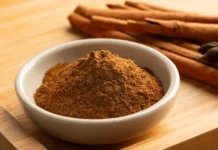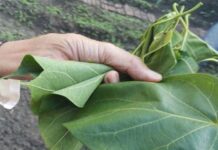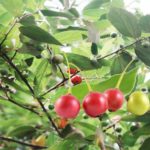The Canistel tree, also known as the Egg Fruit tree or Lekima, is an intriguing plant with a variety of benefits and an interesting backstory. Many families choose to plant this tree in front of their homes, and for good reason. Let’s delve into the origins, characteristics, and significance of this unique tree!
1 Introduction to the Canistel Tree
The Canistel tree, or Lekima, belongs to the Sapotaceae family and is native to the Andean region of South America. It gets its name, Egg Fruit, from the resemblance of its ripe fruit to boiled egg yolks in terms of both color and flavor. What’s even more remarkable is that this fruit is never infested with worms.
 Ripe Canistel Fruit
Ripe Canistel Fruit
The Canistel tree thrives in hot and humid climates and has good cold tolerance. It is typically grown in mountainous regions, with the southern climate being particularly well-suited to its growth, resulting in higher yields.
The Canistel tree is a small to medium-sized tree, reaching heights of 12-18 meters. It has a sturdy, branching structure with dark green, smooth, and thick leaves that are lanceolate in shape and range from 9-15 cm in length.
The flowers are small, solitary, and have a pleasant fragrance. They are yellow-green in color and bloom throughout the year.
The fruit is oval or egg-shaped, with yellow, sweet, and buttery flesh that tastes similar to egg yolks. The seeds are large, dark brown, and glossy.
 Canistel Flowers
Canistel Flowers
2 Feng Shui Significance of the Canistel Tree
Aesthetic Appeal: The Canistel tree provides year-round greenery and shade, and its bright yellow fruits add a pop of color to any space. Additionally, planting a Canistel tree in front of your home can improve air quality and create a healthier environment.
Feng Shui Symbolism: There are no known Feng Shui records indicating any negative symbolism associated with the Canistel tree. Families can confidently plant this tree without worrying about any adverse effects.
 Canistel Tree
Canistel Tree
3 Benefits of the Canistel Tree in Daily Life
The Canistel tree is widely cultivated due to the nutritional value and health benefits of its fruit.
Promotes Cardiovascular Health
The Canistel fruit helps improve blood circulation, stimulates red blood cell production, enhances the nervous system, and lowers cholesterol and obesity risks.
Boosts Immune System
The high vitamin C content in Canistel fruit strengthens the body’s defense mechanism and boosts immunity.
Anti-Inflammatory and Wound Healing Properties
The fruit contains compounds with anti-inflammatory properties and promotes wound healing by stimulating tissue regeneration. Drinking tea made from Canistel fruit powder is believed to have detoxifying effects on the body.
Skin Whitening
Vitamin extracts from the Canistel fruit help protect the skin from the harmful effects of UVA/UVB rays.
Anti-Aging and Cancer-Fighting Potential
At the New York Society of Cosmetic Chemists (NYSCC) Technology Transfer event, researcher Leonel Rojo from Rutgers University presented the anti-aging and wound-healing properties of Canistel seed oil. According to Rojo, this oil can help fight aging by increasing the production and longevity of elastin, a protein that prevents wrinkles.
Iron Supplement
The iron present in Canistel fruit is a versatile nutrient. It aids in oxygen transport throughout the body, maintaining elasticity, enhancing memory, and stabilizing mood.
 Benefits of the Canistel Tree
Benefits of the Canistel Tree
4 Planting and Caring for the Canistel Tree
Planting Techniques
The Canistel tree is typically propagated by seed, or through asexual reproduction methods such as grafting, cutting, and air layering to achieve higher yields. It can be grown in various soil types.
For optimal growth, mix fertilizer with powdered soil and place it in the planting hole, positioning the seedling in the center and covering it with soil.
Once the tree has taken root, start fertilizing it with a diluted mixture of compost (⅕ : ⅓) and keep the soil moist by regular watering.
 Canistel Fruit
Canistel Fruit
Care Instructions
Maintain moisture around the Canistel tree by covering the root area with straw and providing shade during intense sunlight. In dry seasons, ensure adequate water supply, especially when the fruits are growing and about to ripen. Break up the crust after heavy rains and remove weeds during the spring (January-February) and fall (August-September) seasons. Till the roots 2-3 times a year and fertilize with diluted nitrogen fertilizer (1%) about a month after the tree has recovered, repeating the process every 1-2 months.
 Canistel Tree Laden with Fruit
Canistel Tree Laden with Fruit
We hope that this insightful information about the Canistel tree has helped you understand its benefits, significance, and cultivation methods. Wishing you and your family good health and happiness!

































